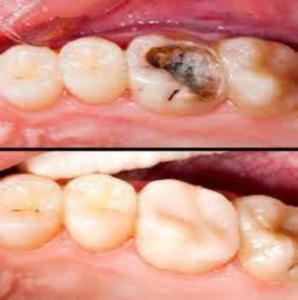Did You Ever Have TM Joint Pain?


TMJ(Temporo-Mandibular Joint) pain also known as Myofascial Pain Dysfunction Syndrome (MPDS) or temporomandibular disorder (TMD), is a condition that affects the muscles and joints of the jaw. It’s characterized by pain and dysfunction in the temporomandibular joint (TMJ) and the muscles that control jaw movement. MPDS can manifest in a variety of symptoms, including jaw pain or tenderness, difficulty chewing or opening the mouth fully, clicking or popping sounds in the jaw joint, and even headaches or earaches.
Causes:


The exact causes of MPDS are often multifactorial. Contributing factors may include stress, teeth grinding (bruxism), jaw clenching, poor posture, trauma to the jaw or face, and even arthritis.
Symptoms:


These factors can lead to muscle tension, inflammation of the TMJ, and misalignment of the jaw joint, all of which contribute to the symptoms experienced by individuals with MPDS.
Diagnosis:

Diagnosis of MPDS involves a comprehensive evaluation by a healthcare provider, typically a dentist or a doctor specializing in facial pain. This evaluation may include a physical examination of the jaw and surrounding muscles, imaging studies such as X-rays or MRI scans, and sometimes dental impressions to assess the bite and jaw alignment.
Treatment:


Treatment for MPDS is tailored to each individual and often involves a combination of approaches. Self-care strategies may include jaw exercises to improve range of motion and reduce muscle tension, application of heat or cold packs to the jaw, and practicing stress management techniques. Dental treatments such as the use of oral appliances (splints or mouthguards) to stabilize the jaw and prevent teeth grinding may also be recommended.
In more severe cases of MPDS, where conservative treatments do not provide adequate relief, additional interventions such as physical therapy, medications to reduce pain and inflammation, or even surgical procedures may be considered. It’s important for individuals with MPDS to work closely with their healthcare providers to develop a personalized treatment plan that addresses their specific symptoms and underlying causes.
Early intervention and appropriate management can significantly improve symptoms and quality of life for people living with MPDS. Seeking timely medical advice and adopting a proactive approach to managing symptoms can help minimize discomfort and prevent the progression of this condition.

















 Severely decayed tooth –
Severely decayed tooth –  Severe gum disease –
Severe gum disease –  Fractured tooth –
Fractured tooth –  Impacted wisdom teeth –
Impacted wisdom teeth –  For orthodontic treatment –
For orthodontic treatment – 

 Avoid Certain Foods: Until you see your orthodontist, avoid hard, sticky, or chewy
Avoid Certain Foods: Until you see your orthodontist, avoid hard, sticky, or chewy























